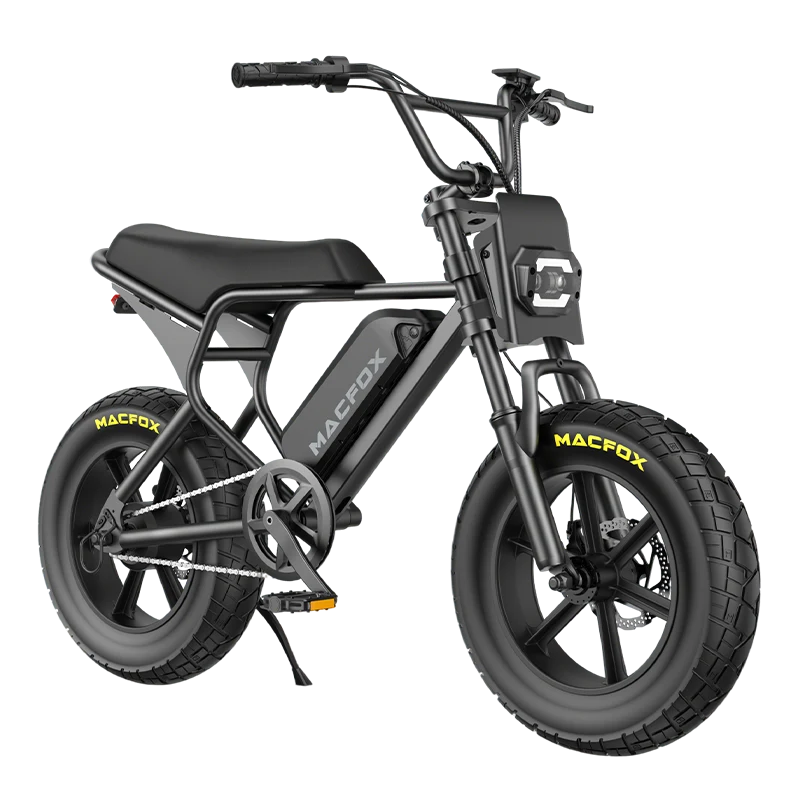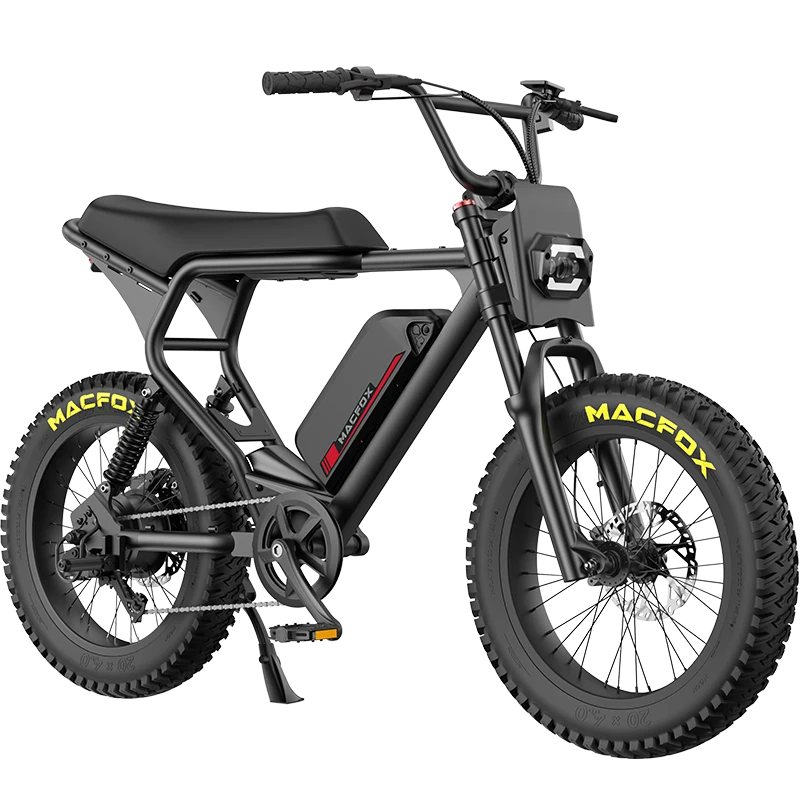Modern ebikes rely on two distinct sensor technologies—torque and cadence sensors—to translate rider effort into motorized assistance.
These systems differ fundamentally in how they interpret pedaling input, which directly influences performance across diverse terrains and riding scenarios.
By demystifying their operational principles, terrain-specific advantages, and maintenance requirements, this guide aims to equip riders with actionable insights.
With this knowledge, riders will be able to make informed and personalized choices that suit their specific cycling needs.
Understanding Sensor Mechanics
The performance gap between torque and cadence sensors originates in how they gather and process pedaling data.
Torque Sensors
Torque sensors quantify the physical pressure a rider applies to the pedals, measured in Newton-meters (Nm). This is done using strain gauges or magnetoelastic components.
Technical Note
Torque calculation example:
(Equivalent to applying 10kg force on a 15cm pedal)
These sensors analyze force variations up to 1,000 times per second, providing a highly detailed response to pedaling pressure. During uphill climbs, for instance, when the rider exerts more force, the sensor detects this increase and signals the motor to amplify assistance proportionally.
Certification
ISO 17025 calibrated | 10-50ms response delay
Test conditions: 23±2℃, 60% RH
This real-time synchronization between rider input and motor output creates a natural cycling feel. It closely mimics traditional biking dynamics, making it ideal for varied terrains where responsive power delivery is needed.
Cadence Sensors
Cadence sensors track the rotational speed of the pedals (RPM). The moment the pedals begin moving, they activate a predefined motor assist level.
Industry Standard
EN 15194 compliant | 280ms average delay
Effective detection range: 3mm gap
This approach prioritizes simplicity and ensures motor assistance is provided without requiring additional input from the rider. It’s perfect for urban cycling, where conditions are more predictable and consistent.
However, cadence sensors lack the ability to measure force, which means they are less adaptive when faced with sudden changes in terrain, such as steep inclines or rough surfaces. As a result, they may not provide the same level of performance on challenging routes.
Terrain-Driven Performance
Optimal sensor selection hinges on terrain complexity and the desired balance between responsiveness and simplicity.
Torque Systems
Torque sensors excel in mixed-terrain environments where real-time adjustments are necessary. Laboratory tests have shown that torque-equipped bikes achieve 19–27% greater battery efficiency than cadence models, due to the system’s ability to adjust motor power dynamically.
ASTM Test Data
48V/20Ah battery | 500m elevation gain/50km route
Torque system range: 75km (45psi tire pressure)
Cadence system range: 62km (L3 assist level)
For example, during mountain biking on technical trails, the torque sensor adjusts the motor output to match obstacles and terrain changes, reducing wheel slippage by 40% compared to cadence-based systems.
Application Example:
A commuter navigating hilly suburbs experiences adaptive power delivery. The motor assistance scales up during climbs and tapers off during descents. This ensures an optimal balance between battery life and physical exertion.
Cadence Systems
Cadence sensors provide consistent operation that benefits urban riders who mostly travel through flat or mildly varying terrains. The motor assistance is triggered the moment pedaling begins, making it ideal for navigating stop-and-go traffic situations.
Terrain Adaptation
| Gradient | Power fluctuation |
|---|---|
| <5% | ±15% |
| >15% | +300% gear shift required |
One major advantage of cadence systems is that they are relatively low maintenance. Unlike torque systems, cadence sensors don’t require annual calibration, making them a convenient option for casual users.
Application Example:
A rider navigating flat city streets enjoys consistent motor activation at each intersection. This feature removes the need for nuanced pedal pressure adjustments, which is particularly useful in urban environments with frequent stops.
Decision-Making Essentials: Balancing Key Factors
Three critical aspects determine the ideal sensor choice: responsiveness, energy efficiency, and rider expertise.
Responsiveness Across Terrains
Torque sensors adjust assistance within 10–50 milliseconds of detecting force changes. This immediate response is crucial for technical trails where rapid adjustments are needed to handle sudden obstacles or shifts in terrain.
Extreme Conditions
|-10℃ wet environment → +35ms delay
|40℃ direct sunlight → 31% battery degradation
On the other hand, cadence sensors exhibit response delays of 100–300ms. While this is sufficient for steady, predictable environments like city streets, it may not be fast enough for varying or challenging terrains.
Battery Longevity Optimization
Torque sensors are more energy-efficient since they adjust motor output in line with the rider’s effort. This can extend the bike's range by 22% on hilly routes compared to cadence systems.
Cadence sensors, however, apply a fixed level of motor power regardless of the terrain. This often leads to faster battery drain, especially on routes with significant elevation changes or varying surfaces.
Skill Level Considerations
Torque systems reward active pedaling, making them more appealing to experienced cyclists who enjoy a dynamic, responsive ride. These systems require some skill and finesse, rewarding more active riders.
In contrast, cadence systems are more intuitive and straightforward. This makes them ideal for casual riders who prioritize convenience over performance and are less concerned with technical adjustments.
Sustaining Performance
Proper upkeep ensures long-term sensor reliability and accuracy.
Torque Sensor Calibration
To maintain the accuracy of torque sensors, annual calibration using certified tools is essential. This ensures that the sensor maintains its ±3% force measurement precision.
Maintenance Cost
Calibration fee: $80-120/session
(Includes NIST certification)
Without proper calibration, motor response lag or inconsistent power delivery may occur. Regular calibration ensures the motor’s response remains synchronized with the rider’s effort.
Cadence Sensor Upkeep
Cadence sensors require quarterly inspections to verify the alignment of magnets. Ensuring a consistent 1.5–3mm gap between components is crucial for reliable motor activation.
Warning Threshold
Magnet gap >3.5mm → Signal loss risk
Proper magnet alignment prevents signal dropouts and ensures that the motor remains responsive during rides.
Environmental Resilience
Both torque and cadence sensors benefit from being IP67-rated, offering protection against rain, dust, and trail debris. However, in coastal or humid environments, corrosion-resistant coatings are recommended to extend the lifespan of the components.
FAQs
Can torque sensors malfunction prematurely?
High-quality torque sensors are designed to last over 25,000 operating hours under normal conditions. Premature failures are usually caused by improper installation, physical impacts, or exposure to corrosive substances like road salt.
How do cadence sensors perform in frigid climates?
Cadence sensors typically operate reliably at temperatures as low as -20°C. However, lithium-ion batteries may lose 15–20% of their efficiency in extremely cold conditions. Insulated housing and pre-ride battery warming can help mitigate these cold-related performance drops.
Which system retains better resale value?
Torque-equipped bikes tend to command higher resale prices—18–35% more—particularly in regions with varied terrains. This higher resale value is due to their broader performance capabilities, which are highly sought after by cycling enthusiasts.
Conclusion
Torque and cadence sensors cater to different riding styles, each with its unique strengths. Torque systems are perfect for dynamic, adaptive performance, while cadence systems excel in simplicity and ease of use.
- Evaluate Primary Use Cases
- Prioritize Long-Term Costs
- Leverage Local Expertise


















